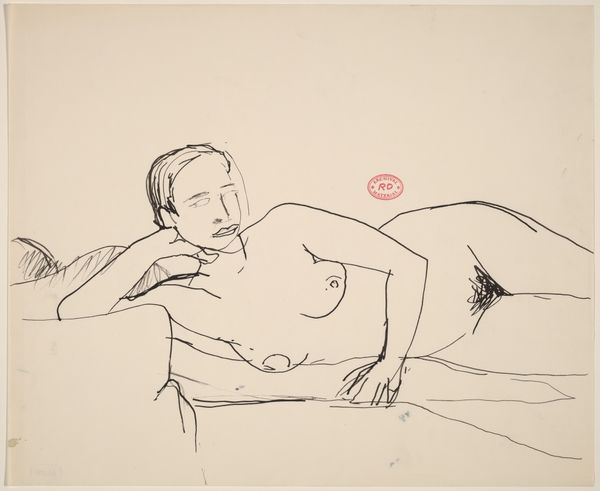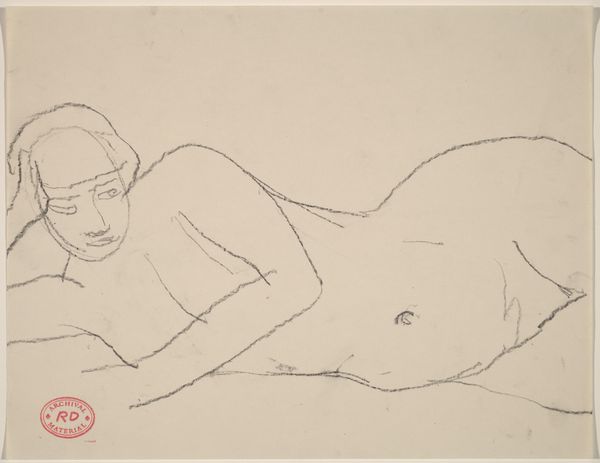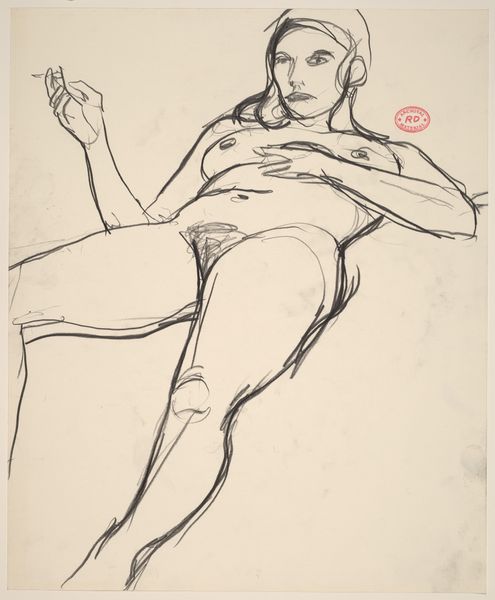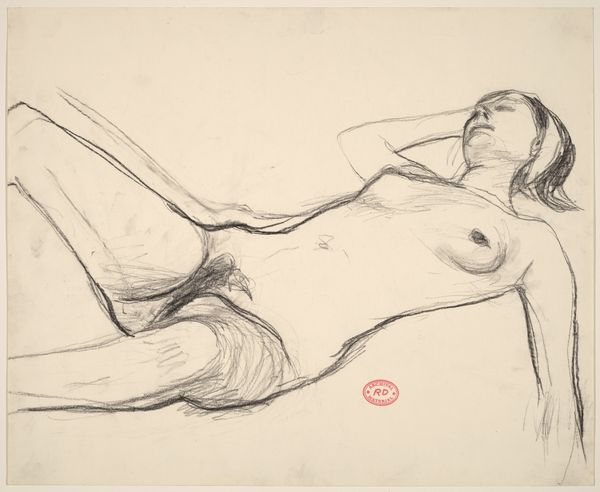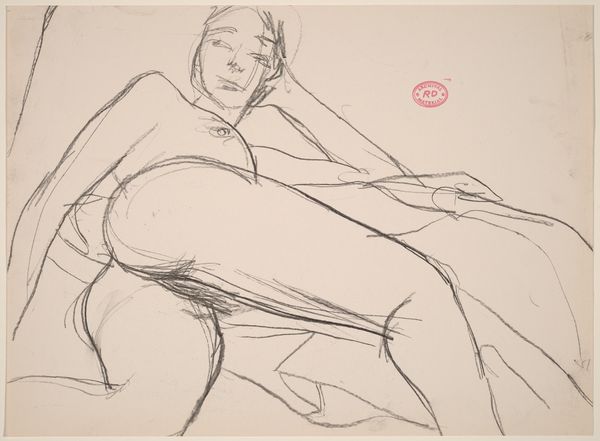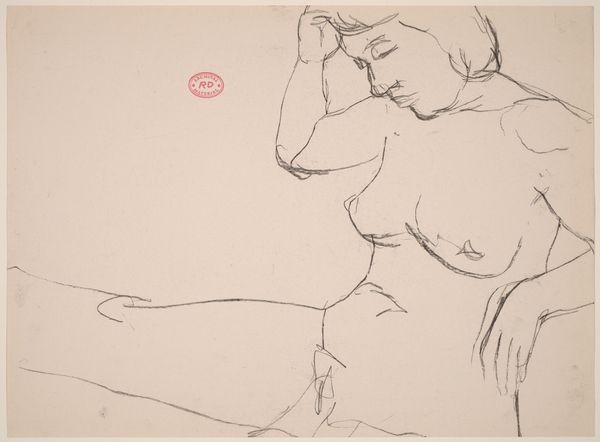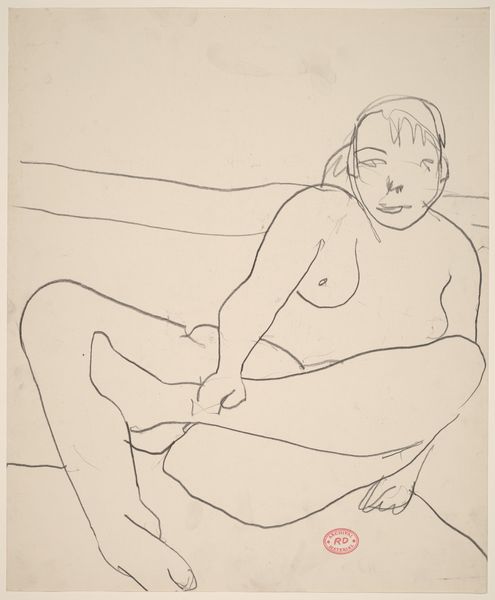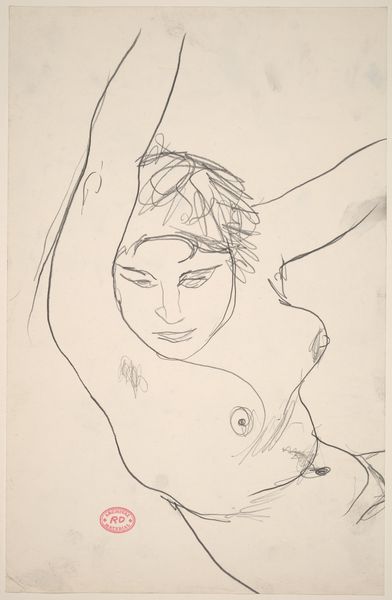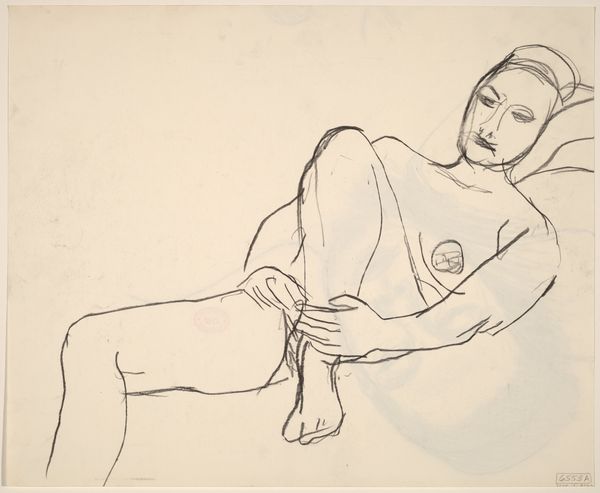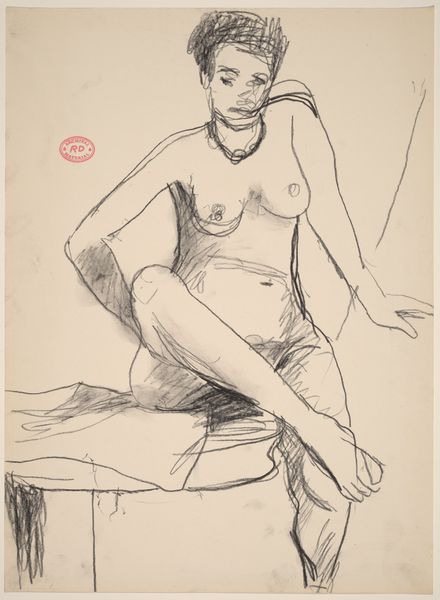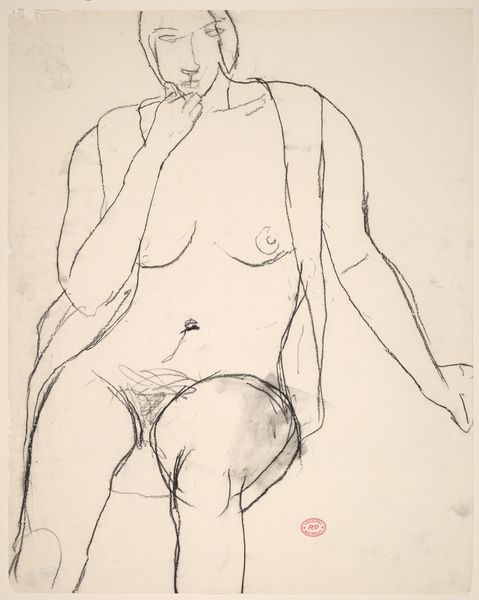![Untitled [nude on her side resting her head on her right hand] by Richard Diebenkorn](/_next/image?url=https%3A%2F%2Fd2w8kbdekdi1gv.cloudfront.net%2FeyJidWNrZXQiOiAiYXJ0ZXJhLWltYWdlcy1idWNrZXQiLCAia2V5IjogImFydHdvcmtzL2RlNThlZDI2LTczMTItNDJkMy1iMWVjLWY5OGYyMWI4MmQ5ZS9kZTU4ZWQyNi03MzEyLTQyZDMtYjFlYy1mOThmMjFiODJkOWVfZnVsbC5qcGciLCAiZWRpdHMiOiB7InJlc2l6ZSI6IHsid2lkdGgiOiAxOTIwLCAiaGVpZ2h0IjogMTkyMCwgImZpdCI6ICJpbnNpZGUifX19&w=3840&q=75)
Untitled [nude on her side resting her head on her right hand] 1955 - 1967
0:00
0:00
drawing, ink
#
portrait
#
drawing
#
ink drawing
#
figuration
#
bay-area-figurative-movement
#
ink
#
portrait drawing
#
nude
#
modernism
Copyright: National Gallery of Art: CC0 1.0
Editor: This is Richard Diebenkorn’s “Untitled [nude on her side resting her head on her right hand]”, an ink drawing created sometime between 1955 and 1967. The line is so simple, so economical, but it still conveys so much about the subject's pose. What do you make of this drawing? Curator: Well, first consider the material: ink, a readily available medium, allowing for direct, almost immediate mark-making. The visible process reveals the artist's hand, the decisions being made and sometimes corrected right there on the page. It flirts with mass production; think about how easily prints can be made, how this challenges notions of the unique "art object". Editor: So, you’re saying the accessibility of the materials informs our understanding of it? Curator: Precisely! The cheapness and ubiquity of ink, contrasted with the preciousness often assigned to nudes in art history… it invites a re-evaluation. Consider how the “unfinished” quality democratizes the artistic process, doesn’t it? Are we seeing the hand of the artist, or are we meant to imagine the potential for reproduction and wider circulation? Editor: That's a great point. I hadn't thought about how the medium challenges our perception of the subject. So, instead of just admiring the form, we should also be thinking about its potential to be reproduced and disseminated? Curator: Absolutely! And also, how the very act of drawing – the labor involved – connects the artist to the lineage of reproductive techniques, from printmaking to photography. Think about the social context of mid-century America: the rise of consumer culture and mass media. How does this drawing, through its deliberate simplicity and potential for reproduction, speak to that context? Editor: I see. So it's not just about the subject, but about how it was made, and how that connects to the broader culture of the time. I definitely have a new perspective now. Curator: Exactly! Materiality, process, and social context. They all work together.
Comments
No comments
Be the first to comment and join the conversation on the ultimate creative platform.
